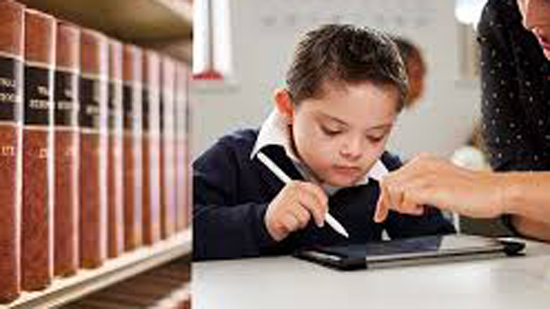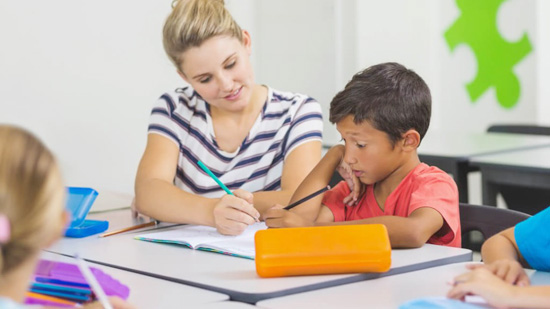According to the National Center for Education Statistics (NCES), understanding the prevalence of learning disabilities among students in special education is crucial for providing the necessary support in schools. Learning disabilities encompass a range of conditions that affect a child’s ability to read, write, speak, or understand mathematics. These conditions can significantly impact a student’s academic performance and overall educational experience.

Photo by umassglobal.edu
Data from the Individuals with Disabilities Education Act (IDEA) reveals that, in the United States, approximately 35% of children receiving special education services are classified with learning disabilities. This percentage has remained relatively stable over the past decade, indicating a persistent need for targeted interventions and support.
Factors contributing to the classification of learning disabilities
Several factors contribute to the classification of learning disabilities in children. Firstly, the definition and criteria for learning disabilities may vary between states and regions, leading to inconsistencies in identification and classification. The presence of comorbid conditions, such as ADHD or emotional disturbances, can complicate the diagnosis and classification process.
Socio-economic factors and access to early intervention services can also influence the identification and classification of learning disabilities. Students from disadvantaged backgrounds may face barriers to receiving timely assessments and appropriate interventions, potentially leading to underrepresentation in the statistics.
Statistics on the percentage of children with learning disabilities
As mentioned earlier, approximately 35% of children receiving special education services are classified with learning disabilities. This figure is derived from data collected by the NCES and is a national average. However, it is important to note that the percentage can vary between states and even within different school districts.
The percentage of children with learning disabilities can differ depending on the age group. For instance, the percentage may be higher in elementary schools compared to high schools, as some students receive targeted interventions and support that enable them to transition out of special education services.
Challenges in accurately identifying and classifying learning disabilities
Accurately identifying and classifying learning disabilities can be a complex task. One of the challenges lies in distinguishing between learning difficulties due to environmental factors, such as language barriers or inadequate instruction, and those resulting from intrinsic learning disabilities. This requires a comprehensive assessment process that considers multiple factors, including cognitive abilities, academic performance, and social-emotional functioning.
The subjective nature of specific learning disability assessments poses another challenge. The interpretation of assessment results can vary between professionals, leading to discrepancies in the classification of learning disabilities. To address this, standardized assessment tools and clear diagnostic criteria have been developed to improve the reliability and validity of the identification process.
Impact of learning disabilities on educational outcomes
Children with learning disabilities often face significant challenges in their educational journey. These challenges can manifest in various ways, including difficulties in reading, writing, comprehension, and mathematical reasoning. As a result, students with learning disabilities may experience lower academic achievement, increased dropout rates, and reduced post-secondary opportunities.
Learning disabilities can also affect a child’s social and emotional well-being. The frustration and feelings of inadequacy that often accompany learning difficulties can lead to self-esteem issues and behavioral problems. Addressing these challenges requires a multi-faceted approach that includes tailored interventions, accommodations, and support systems.
Strategies and interventions for supporting children with learning disabilities
Effective support for children with learning disabilities requires a combination of evidence-based strategies and individualized interventions. Some common approaches include:
Differentiated instruction: Teachers tailor their instructional methods to meet the diverse learning needs of students, providing additional support and accommodations as necessary.
Assistive technology: Tools such as text-to-speech software, graphic organizers, and speech recognition software can enhance students’ ability to access and engage with educational content.
Multisensory techniques: Incorporating visual, auditory, and kinesthetic elements into lessons can help reinforce learning and improve retention for students with learning disabilities.
Individualized Education Programs (IEPs): These personalized plans outline specific goals, accommodations, and support services for students with learning disabilities, ensuring a targeted approach to their education.
Collaborative partnerships: Effective collaboration between educators, parents, and professionals is crucial for developing comprehensive support plans and monitoring progress.
Importance of early intervention and support
Early intervention plays a vital role in addressing learning disabilities and minimizing their long-term impact. Identifying and providing support at the earliest signs of learning difficulties can prevent academic and emotional setbacks. Early intervention services may include speech and language therapy, occupational therapy, and specialized instruction tailored to individual needs.
Fostering a supportive and inclusive learning environment from the early years can contribute to positive educational outcomes for children with learning disabilities. This includes providing professional development opportunities for teachers, promoting awareness and understanding among peers, and implementing policies that prioritize inclusive practices.
Collaborative efforts between educators, parents, and professionals
Addressing the needs of children with learning disabilities requires collaboration among educators, parents, and professionals. Open lines of communication and a shared understanding of the child’s strengths, challenges, and goals are essential for effective support. Regular meetings, progress reviews, and feedback sessions can facilitate this collaboration and ensure a coordinated approach to intervention.
Involving parents as active partners in their child’s education empowers them to advocate for their child’s needs and access appropriate resources. Providing parent training and support groups can further enhance their ability to support their child’s learning and development.
Conclusion
Understanding the percentage of children with learning disabilities receiving special education services is crucial for informing policies and resource allocation. The current statistics indicate that approximately 35% of students in special education are classified with learning disabilities. It is important to recognize the challenges in accurately identifying and classifying learning disabilities, as well as the potential impact of socio-economic factors.
To support children with learning disabilities effectively, it is essential to implement evidence-based strategies, provide early intervention services, and foster collaborative partnerships among educators, parents, and professionals. By promoting inclusive education and ensuring tailored support for every child, we can create an environment where all children can reach their full potential, regardless of their learning differences. Let us work together to build an inclusive educational landscape that empowers and uplifts every student.



